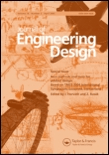
JOURNAL OF ENGINEERING DESIGN
Scope & Guideline
Elevating Engineering Design through Rigorous Research
Introduction
Aims and Scopes
- Human-Machine Interaction:
The journal explores the dynamics of human-machine interaction, focusing on how design can facilitate better collaboration and usability in various contexts, including smart manufacturing and digital twins. - Data-Driven Design:
A significant emphasis is placed on leveraging data analytics, machine learning, and artificial intelligence to inform design decisions, optimize processes, and enhance product performance. - Sustainable and Eco-friendly Design:
Research on sustainability practices in engineering design is crucial, addressing the environmental impact of products and processes, and promoting eco-design principles. - Customization and Personalization in Design:
The journal frequently publishes studies on customizable design solutions, emphasizing user-centered design and the integration of user feedback into the design process. - Innovative Design Methodologies:
The journal showcases new methodologies and frameworks for design, including the use of knowledge graphs, modular design strategies, and advanced optimization techniques. - Interdisciplinary Approaches:
Research that crosses disciplinary boundaries, incorporating insights from psychology, sociology, and economics into engineering design practices, is a core theme of the journal.
Trending and Emerging
- Artificial Intelligence in Design:
The integration of artificial intelligence into the design process is a rapidly growing theme, with researchers exploring how AI can enhance creativity, efficiency, and decision-making in design. - Human-Centered Design Approaches:
There is an increasing focus on human-centered design, emphasizing the importance of user experience and engagement in the design process, particularly in contexts like smart products and services. - Sustainability and Circular Design:
Sustainability remains a critical concern, with emerging research on circular design practices that prioritize resource efficiency and minimize environmental impact. - Collaborative and Distributed Design:
The trend towards collaborative design processes, including remote teamwork and distributed design practices, is gaining traction as more organizations adopt flexible work models. - Advanced Simulation and Modeling Techniques:
Emerging methodologies utilizing advanced simulation and modeling techniques, such as digital twins and virtual reality, are becoming more prominent in engineering design research. - Integration of Behavioral Insights:
Research is increasingly incorporating behavioral insights into design processes, exploring how understanding user behavior can inform more effective design strategies.
Declining or Waning
- Traditional Design Methods:
There is a noticeable decline in research focused on conventional design methods, as the field shifts towards more innovative and technology-driven approaches. - Static Product Evaluation Techniques:
Methods that rely heavily on static evaluations of product designs are less frequently discussed, with a growing preference for dynamic and iterative evaluation processes. - General Theoretical Frameworks:
The emphasis on broad theoretical frameworks without practical application is waning, as researchers increasingly seek practical, applicable methodologies. - Single-Domain Focus Studies:
Research that focuses exclusively on a single domain of engineering design is decreasing, as interdisciplinary approaches become more valued in addressing complex design challenges. - Legacy Tools and Techniques:
The use of outdated design tools and techniques is less common, with a clear trend towards adopting cutting-edge technologies such as AI and machine learning in design processes.
Similar Journals

International Journal of Interactive Design and Manufacturing - IJIDeM
Transforming Ideas into Interactive SolutionsInternational Journal of Interactive Design and Manufacturing (IJIDeM), an esteemed publication by SPRINGER HEIDELBERG, has carved a niche in the domains of Industrial and Manufacturing Engineering and Modeling and Simulation. Established in 2008, this journal serves as a critical platform for disseminating cutting-edge research and practical advancements related to interactive design and innovative manufacturing processes. With an impact factor that places it within the Q2 and Q3 quartiles of respective categories, and Scopus rankings affirming its relevance, IJIDeM invites contributions that explore the crossroads of design, technology, and engineering. Researchers, professionals, and students alike will find valuable insights and collaborations through its pages, making it a vital resource for anyone seeking to enhance their understanding of interactive design principles in manufacturing contexts.

Soft Robotics
Innovating the Future of Robotics with Soft Solutions.Soft Robotics, published by MARY ANN LIEBERT, INC, stands as a leading journal dedicated to advancing the field of soft robotics, which merges insights from artificial intelligence, biophysics, and control systems engineering to innovate in areas such as bio-inspired design, human-robot interaction, and flexible robotics. With a distinguished Q1 ranking in multiple categories, including Artificial Intelligence, Biophysics, and Control and Systems Engineering, this journal places itself at the cutting edge of interdisciplinary research, boasting impressive Scopus rankings that reflect its rigorous scholarship and influential contributions to the scientific community. Although it is not an open access journal, it provides valuable insights and findings for researchers, professionals, and students eager to explore the transformative potential of soft robotics in practical applications. The journal has published continuously since its inception in 2014, and will continue to converge between theory and application through 2024, emphasizing its commitment to expanding the frontiers of knowledge in this dynamic field. For those engaged in the exploration of robotics technologies shaped by soft materials and adaptive mechanisms, Soft Robotics is an essential resource that fuels innovation and discovery.

RESEARCH IN ENGINEERING DESIGN
Elevating the standards of engineering research and practice.RESEARCH IN ENGINEERING DESIGN, published by Springer Heidelberg, is a prestigious journal that has been advancing the field of engineering design since its inception in 1989. With an ISSN of 0934-9839 and an E-ISSN of 1435-6066, this journal serves as a critical platform for communicating innovative research within diverse engineering disciplines. The journal is recognized for its impact factor and elite standing in various categories, achieving a Q1 classification in Architecture and Q2 rankings in Civil and Structural Engineering, Industrial and Manufacturing Engineering, and Mechanical Engineering for 2023, underscoring its relevance and prominence in these fields. With Scopus rankings placing it in the top percentiles across multiple engineering domains, it is essential reading for anyone engaged in cutting-edge engineering research. Although not an open access journal, it offers valuable insights and knowledge essential for professionals, researchers, and students dedicated to the development of effective engineering design practices. By bridging theoretical insights with practical applications, RESEARCH IN ENGINEERING DESIGN aims to foster collaborative advancements and inspire future breakthroughs in engineering science.
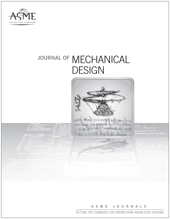
JOURNAL OF MECHANICAL DESIGN
Exploring the Intersection of Design and Engineering.JOURNAL OF MECHANICAL DESIGN, published by the renowned American Society of Mechanical Engineers (ASME), is a leading peer-reviewed journal dedicated to the dissemination of cutting-edge research in the fields of mechanical engineering, computer graphics, and computer-aided design. With an impressive impact factor and categorized within the top Q1 quartile across multiple disciplines, it ranks among the most influential journals in engineering, aiming to foster innovation and collaboration among researchers and practitioners. The journal has maintained its stature since its inception in 1978, presenting articles that encompass a broad range of topics, including advanced design methodologies and novel applications of mechanical systems. The journal does not operate under an open-access model, ensuring that its content remains exclusive for its affiliated audience. As it plans to continue publishing until 2024, the JOURNAL OF MECHANICAL DESIGN stands as a crucial resource for professionals and academics seeking to enhance their knowledge and contribute to advancements in mechanical design.
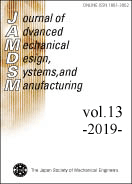
Journal of Advanced Mechanical Design Systems and Manufacturing
Pioneering Research in Design and Manufacturing.The Journal of Advanced Mechanical Design Systems and Manufacturing, published by the Japan Society of Mechanical Engineers, is a pivotal scholarly platform dedicated to advancing knowledge in the fields of Industrial and Manufacturing Engineering and Mechanical Engineering. As an Open Access journal since 2021, it provides unrestricted access to high-quality research, facilitating broader dissemination and collaboration among researchers, professionals, and students globally. The journal's emphasis on innovative methodologies and cutting-edge technologies contributes significantly to the evolving landscape of engineering practices, with its research scope encompassing the latest advancements and applications in mechanical design and manufacturing systems. With a current impact factor that positions it in the Q3 quartile of both the Industrial and Manufacturing Engineering and Mechanical Engineering categories, along with its Scopus rankings further indicating its relevance in the field, this journal is an essential resource for those seeking to push the boundaries of mechanical engineering knowledge. For further inquiries or submissions, please reach the journal at its headquarters located at KDX Iidabashi Square Bldg, 2nd Floor, 4-1 Shin-ogawamachi, Shinjuku-ku, Tokyo, Japan.
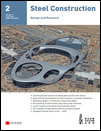
Steel Construction-Design and Research
Elevating Engineering Standards through Steel InsightsSteel Construction-Design and Research is a premier journal published by ERNST & SOHN, focusing on the latest advancements and research within the field of steel construction and structural engineering. With an ISSN of 1867-0520 and E-ISSN 1867-0539, this journal serves as a vital resource for engineers, researchers, and academics committed to enhancing the design and performance of steel structures. Located in the United States, its reputation is bolstered by its impressive standing in various Scopus categories; it ranks in the Q2 quartile for Building and Construction, Civil and Structural Engineering, Mechanics of Materials, and Metals and Alloys as of 2023. This journal is particularly significant as it captures high-quality research spanning critical years from 2011 to 2012 and 2014 to 2024, fetching valuable insights into the evolving methodologies and applications in steel construction. Although it does not operate under an Open Access model, its rigorous peer-review process ensures that contributors deliver top-tier research, making it an essential publication for anyone engaged in the field.
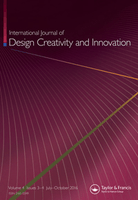
International Journal of Design Creativity and Innovation
Unlocking the Power of Design ThinkingThe International Journal of Design Creativity and Innovation is a pivotal academic platform published by Taylor & Francis Ltd, dedicated to advancing knowledge and research in the interdisciplinary fields of design, creativity, and innovation. Since its inception in 2013, this journal has garnered a remarkable reputation, boasting impressive Scopus rankings such as #15 in Visual Arts and Performing Arts and #25 in Architecture, reflecting its high-impact contributions across various domains. With a consistent focus on fostering innovative approaches and solutions, it serves as an essential resource for researchers, professionals, and students alike, particularly in its well-recognized quartile standings in categories like Aerospace Engineering and Education. The journal's commitment to quality is evident through its rigorous peer-review process, ensuring that each publication is of the highest scholarly value. While it operates as a traditional subscription-based journal, accessibility to research is enhanced through various institutional agreements. As it continues to evolve until 2024, the International Journal of Design Creativity and Innovation remains an indispensable asset for anyone involved in the dynamic intersection of design and innovation.
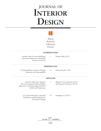
Journal of Interior Design
Crafting the Dialogue Between Space and Humanity.The Journal of Interior Design, published by SAGE Publications Inc., is a premier peer-reviewed academic journal dedicated to the field of interior design. Established in 1975, this journal has been a pivotal platform for disseminating cutting-edge research, innovative design practices, and critical theory in interior spaces. With an impressive Q1 ranking in the Visual Arts and Performing Arts category and a 95th percentile ranking among its peers in arts and humanities, the journal reflects the highest standards of academic excellence. Although it does not offer open access, it provides valuable insights and findings relevant for researchers, professionals, and students alike, enhancing the understanding of interior environments and their impact on human behavior and society. As the field continues to evolve, the Journal of Interior Design serves as an essential resource for thought leadership and scholarly discourse.
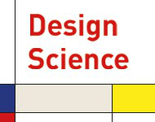
Design Science
Connecting Ideas, Inspiring Design Innovation.Design Science, published by Cambridge University Press, is a premier open access journal that has established itself as a leading platform for innovative research in the interdisciplinary field of design. Since its inception in 2015, the journal has focused on integrating design theories with practical applications across various sectors, including engineering, visual arts, and simulation modeling. With a remarkable impact factor and high rankings in multiple categories—Rank #11/667 in Visual Arts and Performing Arts and Rank #79/307 in General Engineering—Design Science commands a prominent position, being ranked in the top 98th, 76th, and 74th percentiles within its respective fields according to Scopus. The journal's dedication to open access ensures that cutting-edge research is accessible to a global audience, fostering collaboration and dialogue among researchers, professionals, and students alike. This journal not only aims to advance the understanding of design sciences but also serves as a vital resource for those seeking to explore the evolving dynamics of design practice in a rapidly changing technological landscape.
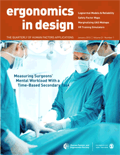
Ergonomics in Design
Elevating design standards with human-centered approaches.Ergonomics in Design is a premier journal published by SAGE PUBLICATIONS INC that focuses on the intersection of engineering and human factors, offering essential insights into the practical applications of ergonomics. With an ISSN of 1064-8046 and E-ISSN of 2169-5083, this journal aims to disseminate high-quality research and innovative design solutions that enhance user experience across various domains. Having consistently ranked in the Q2 tier for Engineering and Q3 for Human Factors and Ergonomics, as per the recent Scopus Ranks, it serves as a valuable platform for scholars and practitioners dedicated to the advancement of ergonomic principles in design. The journal encompasses a wide array of topics from product design to workplace ergonomics, facilitating a multidisciplinary dialogue that supports the improvement of safety, comfort, and performance. This commitment to bridging theory and practice has established Ergonomics in Design as a vital resource for those keen to influence the design landscape from 1993 through to 2024 and beyond.